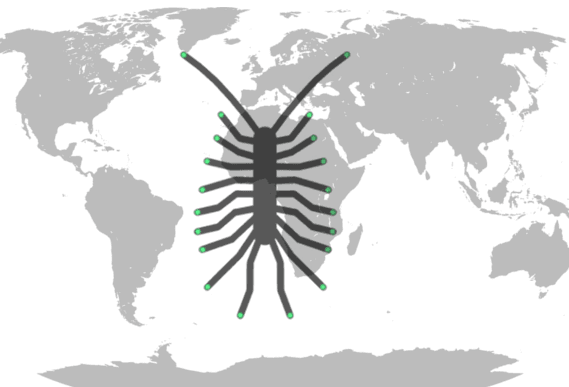Vers un masque de plongée connecté : AgroTIC mène à tout
février 14, 2018Série de 4 volumes sur QGIS en Télédétection
février 16, 2018Un article scientifique publié par des chercheurs de l’université de Chinhoyi (Zimbabwe) et de Pietermaritzburg (South Africa) qui propose l’utilisation des images Sentinel-2 pour estimer la teneur en azote foliaire des plants de café en situation commerciale. Cette étude a été conduite sur deux sites de production d’une surface totale de 350 hectares. L’objectif était d’identifier les bandes spectrales et/ou les indices de végétation les plus pertinents pour estimer la teneur en azote des feuilles de caféier. 57 poins de mesure ont été réalisés afin de vérifier la relation entre les observations effectuées par satellite et les mesures effectuées sur les feuilles (supposées vraies). Les auteurs montrent la possibilité de proposer une approche combinant indices de végétation et réflectances des bandes spectrales préalablement sélectionnées pour estimer la teneur en azote des feuilles avec une relativement bonne qualité (R²= 0,78, RMSE = 0.23). Les qualités prédictives des bandes spectrales et des indices sélectionnés ont été testées par validation croisée. Ce travail montre les potentialités des images Sentinel-2 pour produire des outils d’aide à la décision (ou au diagnostic) pour l’agriculture. Il mérite d’être mentionné car il met aussi en évidence l’intérêt des images satellites gratuites pour en faciliter l’adoption et l’utilisation de la télédétection largement à l’échelle de la planète avec de multiples applications possibles et pertinentes pour l’agriculture, à moindre coût .
Résumé : Nitrogen (N) is the most limiting factor to coffee development and productivity. Therefore, development of rapid, spatially explicit and temporal remote sensing-based approaches to determine spatial variability of coffee foliar N are imperative for increasing yields, reducing production costs and mitigating environmental impacts associated with excessive N applicatiosns. This study sought to assess the value of Sentinel-2 MSI spectral bands and vegetation indices in empirical estimation of coffee foliar N content at landscape level. Results showed that coffee foliar N is related to Sentinel-2 MSI B4 (R2 = 0.32), B6 (R2 = 0.49), B7 (R2 = 0.42), B8 (R2 = 0.57) and B12 (R2 = 0.24) bands. Vegetation indices were more related to coffee foliar N as shown by the Inverted Red-Edge Chlorophyll Index – IRECI (R2 = 0.66), Relative Normalized Difference Index – RNDVI (R2 = 0.48), CIRE1 (R2 = 0.28), and Normalized Difference Infrared Index – NDII (R2 = 0.37). These variables were also identified by the random forest variable optimisation as the most valuable in coffee foliar N prediction. Modelling coffee foliar N using vegetation indices produced better accuracy (R2 = 0.71 with RMSE = 0.27 for all and R2 = 0.73 with RMSE = 0.25 for optimized variables), compared to using spectral bands (R2 = 0.57 with RMSE = 0.32 for all and R2 = 0.58 with RMSE = 0.32 for optimized variables). Combining optimized bands and vegetation indices produced the best results in coffee foliar N modelling (R2 = 0.78, RMSE = 0.23). All the three best performing models (all vegetation indices, optimized vegetation indices and combining optimal bands and optimal vegetation indices) established that 15.2 ha (4.7%) of the total area under investigation had low foliar N levels (<2.5%). This study demonstrates the value of Sentinel-2 MSI data, particularly vegetation indices in modelling coffee foliar N at landscape scale.
Référence : Chemura, A., Mutanga, O., Odindi, J., & Kutywayo, D. (2018). Mapping spatial variability of foliar nitrogen in coffee (Coffea arabica L.) plantations with multispectral Sentinel-2 MSI data. ISPRS Journal of Photogrammetry and Remote Sensing, 138, 1-11.

